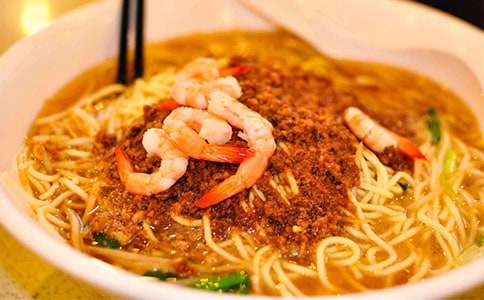面條:noodle。n.面條。vi.(樂(lè)師)彈撥樂(lè)器;(即興)演奏;[口語(yǔ)]長(zhǎng)時(shí)間地思考;反復(fù)醞釀。

第三人稱單數(shù): noodles復(fù)數(shù): noodles現(xiàn)在分詞: noodling過(guò)去式: noodled過(guò)去分詞: noodled。
例句:
1、Would you prefer rice or noodles? 你喜歡吃米飯還是面條?
2、Just plop the noodles over the center of the sauce .把面條輕放在調(diào)味汁中間就行了。
3、Drop the noodles into the water 將面條下到水里。
4、Empty the noodles and liquid into a serving bowl 把湯面倒進(jìn)上菜用的碗中。
5、They have two restaurants that purvey dumplings and chicken noodle soup. 他們那里有兩家供應(yīng)餃子和雞肉湯面的餐館。






